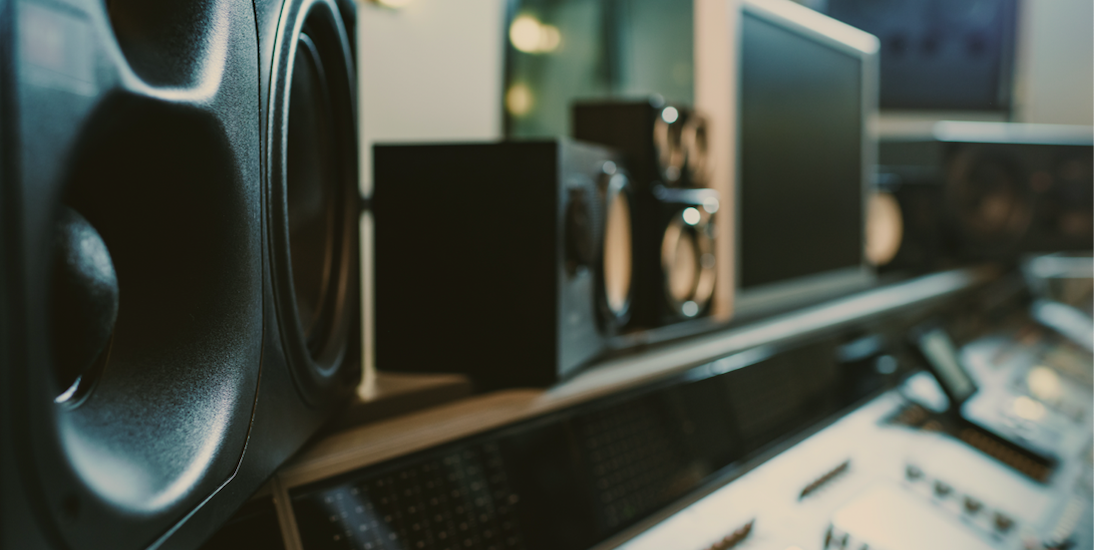Do you like listening to your favorite music or making wonderful sounds of great audio quality in your home studio? Either way, invest in active speakers today for a heightened experience. They’re the most prevalent type of speaker in most music studios.
But which among the multiple active speakers in the market should you buy? There are a lot of aspects, including speaker features, specifications, and your budget, that you need to keep in mind. Luckily, you’ve come to the right place. This post will aid you in buying your first active speakers.
What Are Studio Monitors And How Do They Work
Studio monitors are generally active speakers. These speakers have built-in amplifiers, making it easier to regulate the sound level of each monitor. To comprehend some of its concepts, a fundamental understanding of how such speakers work is essential.
The driver, amplifier, and crossover are the critical components of active studio monitors. These components that are located at the front of a speaker are referred to as drivers. They’re electroacoustic transducers capable of converting electrical audio signals to sound.
The audio amplifiers power the drivers. An amplifier boosts weak electronic audio impulses to a level sufficient for driving loudspeakers or earphones. When an audio signal reaches a speaker, a component known as a crossover divides it into several frequency bands. The separated signals are subsequently transmitted to their appropriate drivers, creating crisp and high-quality sound.
What Makes A Good Studio Monitor
Experts believe that an outstanding studio speaker should have fewer distortions, a broad frequency response, great stereo imaging, balanced sound coloration, and a high-volume level despite having a compact cabinet. It should enable you to listen for long durations without getting tired. Most mixers who listen to music at loud or excessive frequencies, such as excessive or insufficient treble, often experience fatigue or tiredness.
The speakers must be sturdy, and the circuitry must be able to broadcast any music without spikes, blasts, or blinks too. Ideal active speakers are said to produce a much better quality sound output compared to their peers.
Factors To Be Considered When Buying Active Speakers
If you’re new to the recording industry, you may not know how to precisely choose recording devices such as studio monitors or active speakers, sound interfaces, mixers, and other recording equipment. There’s a myriad of options and what works for others might not work for your studio.
Before you choose a studio monitor, there are several factors that you need to consider. These are the factors:
- Wattage
A high-wattage active speaker makes a more detailed sound and gives you more control over the sound with less distortion. If you have a large room or studio, you’ll need a higher wattage since more power is necessary to fill the space and produce a more precise sound.
However, if you’re shopping for a small studio, a speaker that produces a sound that’s not as defined will be fine. Since sound would travel over a smaller distance, the likelihood of distortion is reduced.
- Size
Studio monitors come in a variety of sizes. A large studio monitor can provide you with better control over the sound, and its frequency response will likely be more accurate. Yet if you’re just in a small at-home studio, there’s no need to get a large speaker as the audio might be wasted. Your best chance of choosing a studio monitor that you enjoy is to choose a size that corresponds to the dimensions of your room.
- Acoustic Treatment
Acoustic treatment is the process of diffusing and dampening direct sounds that strike the walls of your room or studio. Nonetheless, it seems to be many buyers’ afterthought when it comes to purchasing studio monitors. An inadequately treated studio might limit your capacity to mix. Therefore, to be able to listen to excellent mixes, you must sound treat the space or studio properly.
- Your Budget
The prices of quality studio monitors range anywhere. The more expensive ones may have more features, but that doesn’t mean they’ll work better. The caliber of the music you create will still depend on your skills as a mix producer.
If you’re an enthusiast who records or listens to music for enjoyment, a less-priced model will suffice. But if you’re working in a professional environment, you may want to invest in more expensive multifunctional studio monitors.
Final Thoughts
Studio monitors, also known as active speakers, are important for music lovers, particularly musicians and audio engineers. If you’re looking to create a dynamic and interesting sound, be sure to do it using the most suitable active speakers. Regardless of the music you produce or the studio you’ve set up, the right studio monitor should help you mix great recordings.





